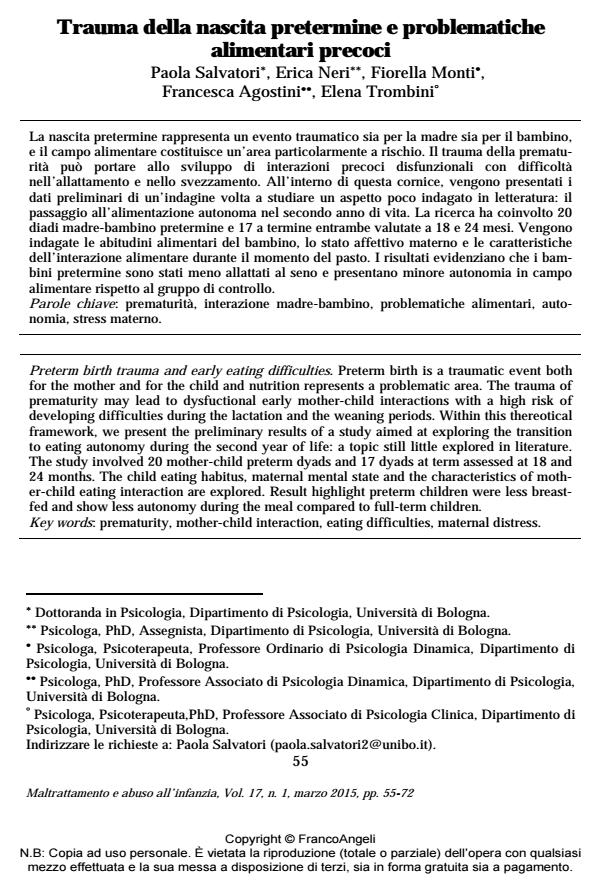Preterm birth trauma and early eating difficulties
Journal title MALTRATTAMENTO E ABUSO ALL’INFANZIA
Author/s Paola Salvatori, Erica Neri, Fiorella Monti, Francesca Agostini, Elena Trombini
Publishing Year 2015 Issue 2015/1
Language Italian Pages 18 P. 55-72 File size 112 KB
DOI 10.3280/MAL2015-001004
DOI is like a bar code for intellectual property: to have more infomation
click here
Below, you can see the article first page
If you want to buy this article in PDF format, you can do it, following the instructions to buy download credits

FrancoAngeli is member of Publishers International Linking Association, Inc (PILA), a not-for-profit association which run the CrossRef service enabling links to and from online scholarly content.
Preterm birth is a traumatic event both for the mother and for the child and nutrition represents a problematic area. The trauma of prematurity may lead to dysfuctional early mother-child interactions with a high risk of developing difficulties during the lactation and the weaning periods. Within this thereotical framework, we present the preliminary results of a study aimed at exploring the transition to eating autonomy during the second year of life: a topic still little explored in literature. The study involved 20 mother-child preterm dyads and 17 dyads at term assessed at 18 and 24 months. The child eating habitus, maternal mental state and the characteristics of mother- child eating interaction are explored. Result highlight preterm children were less breastfed and show less autonomy during the meal compared to full-term children.
Keywords: Prematurity, mother-child interaction, eating difficulties, maternal distress.
Paola Salvatori, Erica Neri, Fiorella Monti, Francesca Agostini, Elena Trombini, Trauma della nascita pretermine e problematiche alimentari precoci in "MALTRATTAMENTO E ABUSO ALL’INFANZIA" 1/2015, pp 55-72, DOI: 10.3280/MAL2015-001004